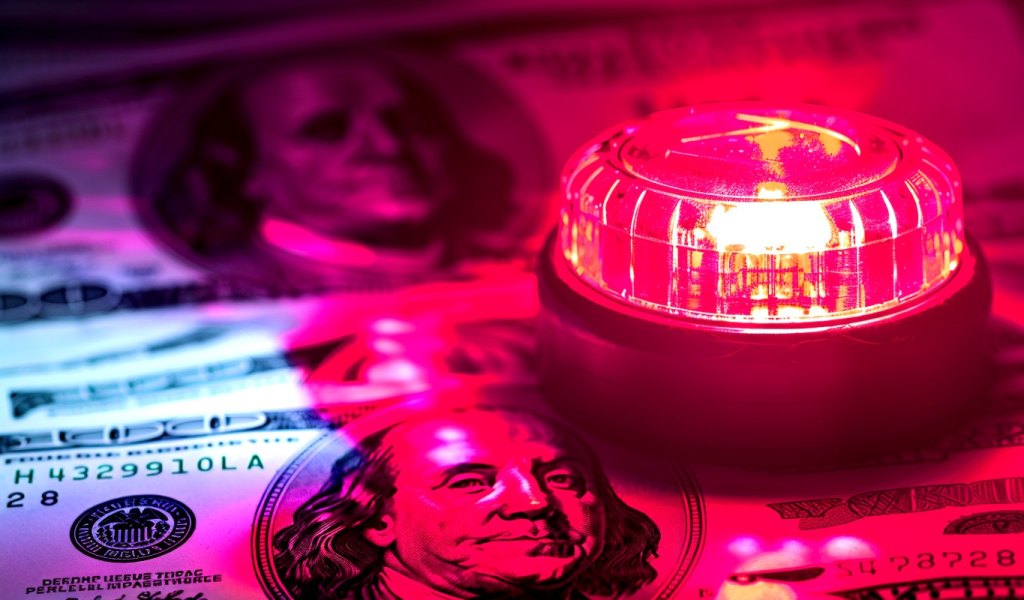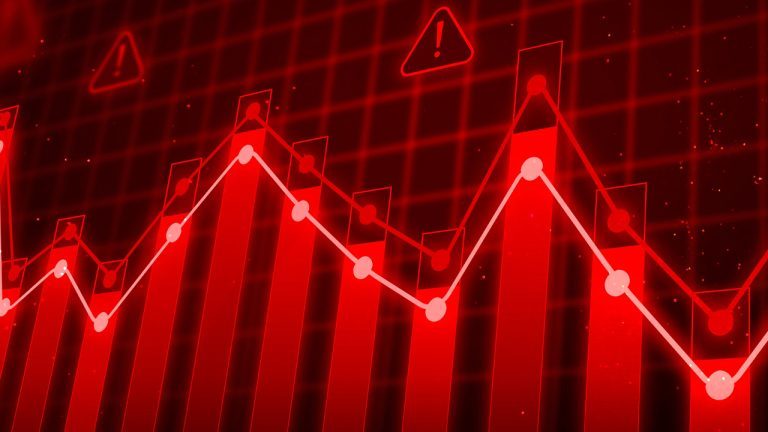
Japan’s stock market is plunging to start the week, fueling a global asset sell-off. The Bank of Japan’s decision to tighten monetary policy and an increasingly bleak economic outlook in the US have triggered a worldwide market reversal, sending Bitcoin and the crypto markets in a free fall. After touching $70,000 about a week ago, […]
The post $768,850,000 in Bitcoin and Crypto Liquidated in 12 Hours As Global Asset Dump Intensifies appeared first on The Daily Hodl.

After briefly breaking the $3 trillion market capitalization mark in June, things have taken a negative turn for the world’s most valuable chipmaker.
Nvidia’s highly anticipated “Blackwell” B-200 artificial intelligence chip will reportedly be delayed, sending the near-term future of the entire AI industry into a state of uncertainty.
Tech news outlet The Information claims that a Microsoft employee and at least two other people familiar with the situation have stated that the new chip’s launch date has been pushed back by at least three months due to a design flaw.
While Nvidia hadn’t given a public launch date, CEO Jensen Huang recently announced that the company would begin sending engineering samples “this week” on July 31 at the SIGGRAPH event in Denver, Colorado.
 Following a heinous jobs report, questions are arising about whether the United States will experience a soft landing or if a full-fledged recession is on the horizon. All five major U.S. stock market indices saw notable declines on Friday, and the crypto economy fell by 5.82% to reach $2.2 trillion. Crypto Economy and U.S. Stocks […]
Following a heinous jobs report, questions are arising about whether the United States will experience a soft landing or if a full-fledged recession is on the horizon. All five major U.S. stock market indices saw notable declines on Friday, and the crypto economy fell by 5.82% to reach $2.2 trillion. Crypto Economy and U.S. Stocks […]

The valuation assumes continued aggressive Bitcoin buying by MicroStrategy.
Shares of MicroStrategy are set for 30% gains if Bitcoin (BTC) climbs to $150,000 by the end of 2025, according to an Aug. 2 analyst report shared with Cointelegraph.
The stock could reach $2,150 per share if MicroStrategy sustains the BTC buying spree started by founder Michael Saylor in 2020, according to Benchmark fintech analyst Mark Palmer. It currently trades at around $1,450.
“Our valuation assumes that [MicroStrategy] will continue to aggressively accumulate Bitcoin during the next 1.5 years and that Bitcoin’s price will reach $150,000” by the end of 2025, Palmer told Cointelegraph in an email.

Cathie Wood’s ARK has resumed active trading of crypto-related stocks like Coinbase, 3iQ Ether staking ETF, Robinhood and its own spot Bitcoin ETF.
Cryptocurrency-related trades are again gathering steam at Cathie Wood’s investment firm ARK Invest as it returned to trading tens of millions of dollars in crypto-related stocks and exchange-traded funds (ETF) in one day.
After resuming significant sales of Coinbase stock in July, ARK increased it’s sales selling in August, dumping 69,069 Coinbase shares on Aug. 1, according to trading data seen by Cointelegraph. Based on the stock’s closing price, the amount is worth $14.7 million, according to data from TradingView.
The transaction is ARK’s biggest Coinbase sale since early April and late March when the firm dumped around 60,000 Coinbase shares daily.

Bitcoin faces traditionally challenging months, while Japan sees stock sell-off unmatched in nearly 40 years.
Bitcoin needs to hold $60,000 for a shot at fresh all-time highs as traders voice concerns over BTC price performance.
Data from Cointelegraph Markets Pro and TradingView shows Bitcoin (BTC) bouncing from fresh two-week lows of $62,235 on Aug. 2.
Bitcoin continues to tease a breakdown toward $60,000 as risk assets see a period of flux to start the month.

Shares are a bargain after second-quarter earnings sent the stock down roughly 16%, says Benchmark analyst Mark Palmer.
Galaxy Digital shares are a bargain after disappointing second-quarter earnings sent the stock down roughly 16%, according to an Aug. 1 analyst report shared with Cointelegraph.
Investors retreated from the stock after Galaxy revealed a series of bearish metrics during its second-quarter earnings call. According to the report, which was penned by Benchmark fintech analyst Mark Palmer, these included a larger-than-expected net loss, a decline in counterparty trading revenue and a nearly 8% drop in book value per share.
According to Palmer, the stock route ignores “several positive developments in the build-out of the company’s institutional digital asset platform” and progress on other “key initiatives, including its ongoing effort to uplist its stock to the Nasdaq in the U.S., and its plans to expand and monetize the high-voltage power capacity at its flagship Helios data center in Dickens County, Texas.”

Cathie Wood’s crypto investment firm ARK resumed selling the Coinbase stock amid the Bitcoin price push in July.
ARK Invest — one of 10 issuers of spot Bitcoin (BTC) exchange-traded fund (ETF) in the United States — is taking profits from its Coinbase stash amid BTC’s failure to retest $70,000.
Cathie Wood’s crypto investment firm ARK has resumed selling Coinbase (COIN) stock, with its ARK Next Generation Internet ETF (ARKW) offloading 12,077 COIN shares on July 31, according to trade notification seen by Cointelegraph.
According to data from TradingView, the amount was worth $2.7 million at the time of the sale, with COIN closing at $224 on July 31.

We’re entering the “third wave” of AI and the era of mechanical humanoids, according to Nvidia.
Nvidia looks like a world-beater again as a slew of announcements related to the “next wave” of artificial intelligence has its market capitalization up about 11%.
Speaking at the annual Special Interest Group on Computer Graphics and Interactive Techniques (SIGGRAPH) event in Denver, Colorado, Nvidia CEO Jensen Huang announced several new services designed to bridge the gap between the digital and physical worlds.
Per Huang:

Bitcoin price could reach above the $88,000 mark by September, driven by continued Bitcoin ETF inflows.
Inflows into BlackRock’s Bitcoin exchange-traded fund (ETF) have exceeded those into the “magnificent seven” stocks in 2024, putting BTC price on track for $88,000 by September.
BlackRocks’s iShares Bitcoin Trust ETF has accumulated nearly $19 billion of Bitcoin (BTC) year-to-date (YTD).
These "baffling" inflows are greater than those of the “magnificent seven” stocks in 2024, according to Jeroen Blockalnd, the founder of Blockland Smart Asset Fund, who wrote in a July 23 X post: